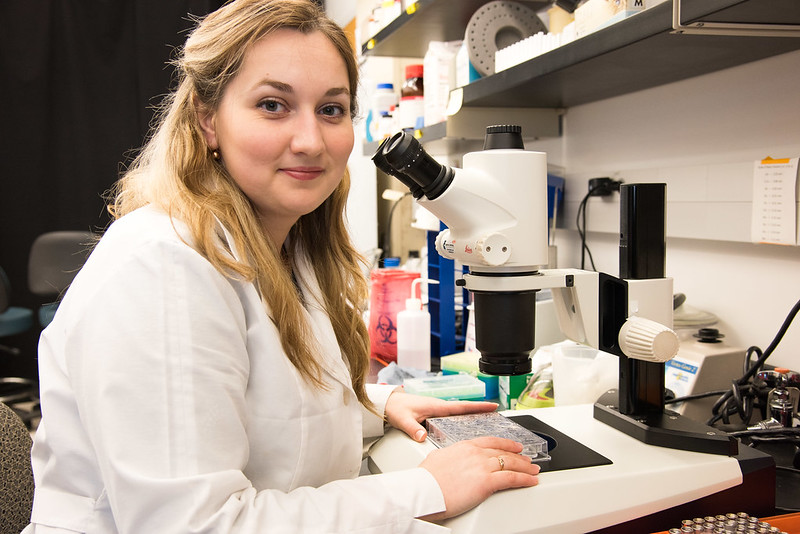Work on HIV capsid proteins earns prestigious retrivology award

Science is all about structure in the work of Anna Gres.
For the past four years, she’s looked closely at one HIV protein to figure out its shape in order to stop the virus.
“Capsid protein is extremely important during the HIV life cycle. About 1,500 copies of it come together to form the protective core around the viral genome,” said Gres, a graduate student in the lab of Bond Life Sciences Center’s Stefan Sarafianos and a Mizzou Ph.D. candidate in chemistry. “So, if you are able to somehow disrupt the interactions between the proteins or make them different, the virus loses its infectivity.”
Gres takes her work on this protein to a national stage next month when she speaks at the Retroviruses meeting at Cold Spring Harbor Laboratory — one of the most prestigious international conference on retroviruses — as the recipient of the 2016 Uta Von Schwedler prize. The prize recognizes the accomplishments of one distinguished graduate student as they complete their thesis.
HIV capsid protein has been studied for almost 30 years, but it’s been tricky to get a precise depiction of what it looks like. Gres uses X-ray crystallography to essentially capture the protein in all its 3-D glory. This method gives scientists the higher resolution picture to study the molecular structure of capsid protein. Her work allows the Sarafianos lab and others to study how it interacts and connects with other capsid proteins and the host protein factors of the cell HIV is trying to take over.
“In the past scientists had been splitting the capsid protein in two halves and crystallizing them separately. Another approach was to introduce several mutations to make it more stable,” Gres said. “You would think that it shouldn’t really matter if we have a few mutations, but the protein behaves in such a way that even slight changes result in subtly different interactions that are enough for the virus to lose its infectivity. We were able to crystallize the native protein without any mutations and that should give us more accurate picture.”
Now that the Sarafianos lab and Gres have a good idea of what that native protein looks like, they’ve moved on to other mutated versions of the protein that impair virus infectivity. This could give them insight into how scientists can stop HIV.
“Many labs reported numerous mutations in the capsid protein over the past 25 years that either increase or decrease the stability of the core, which often results in a noninfectious virus,” she said. “Right now we are interested in seeing what structural changes accompany these mutations and how they can affect the overall stability of the core.”

